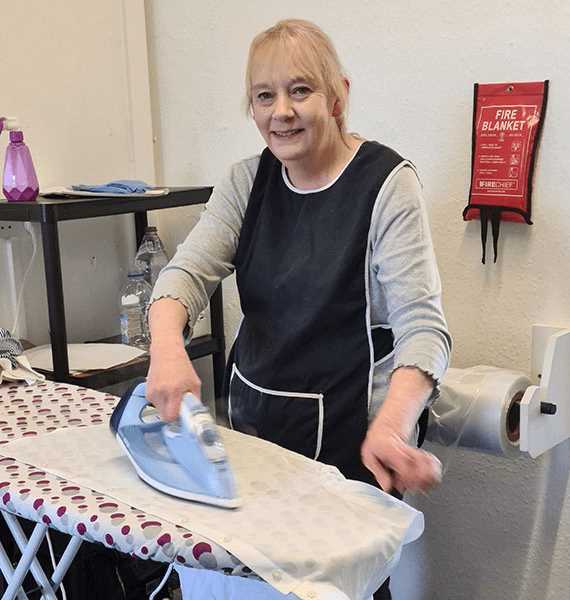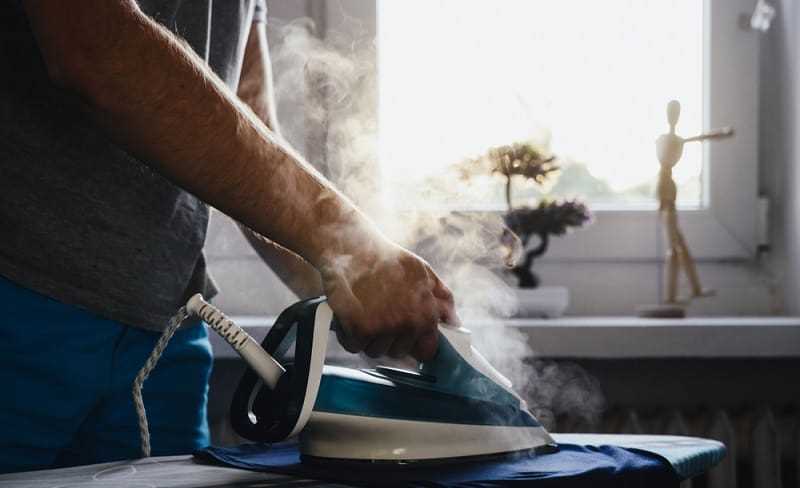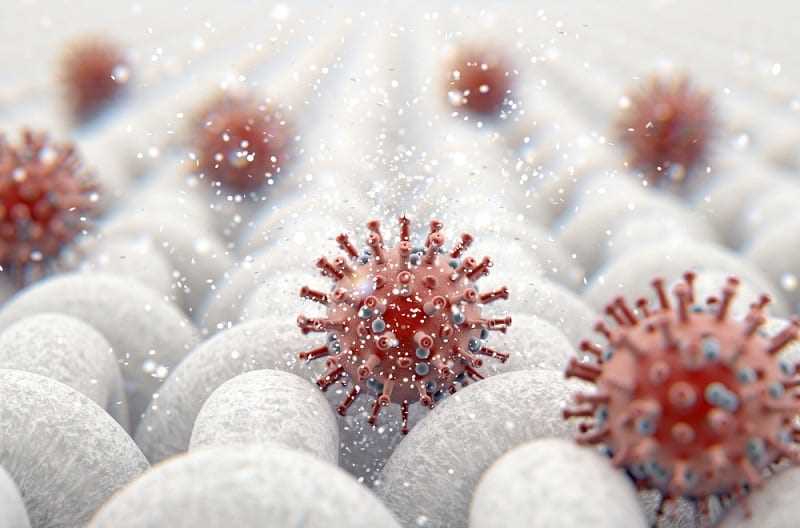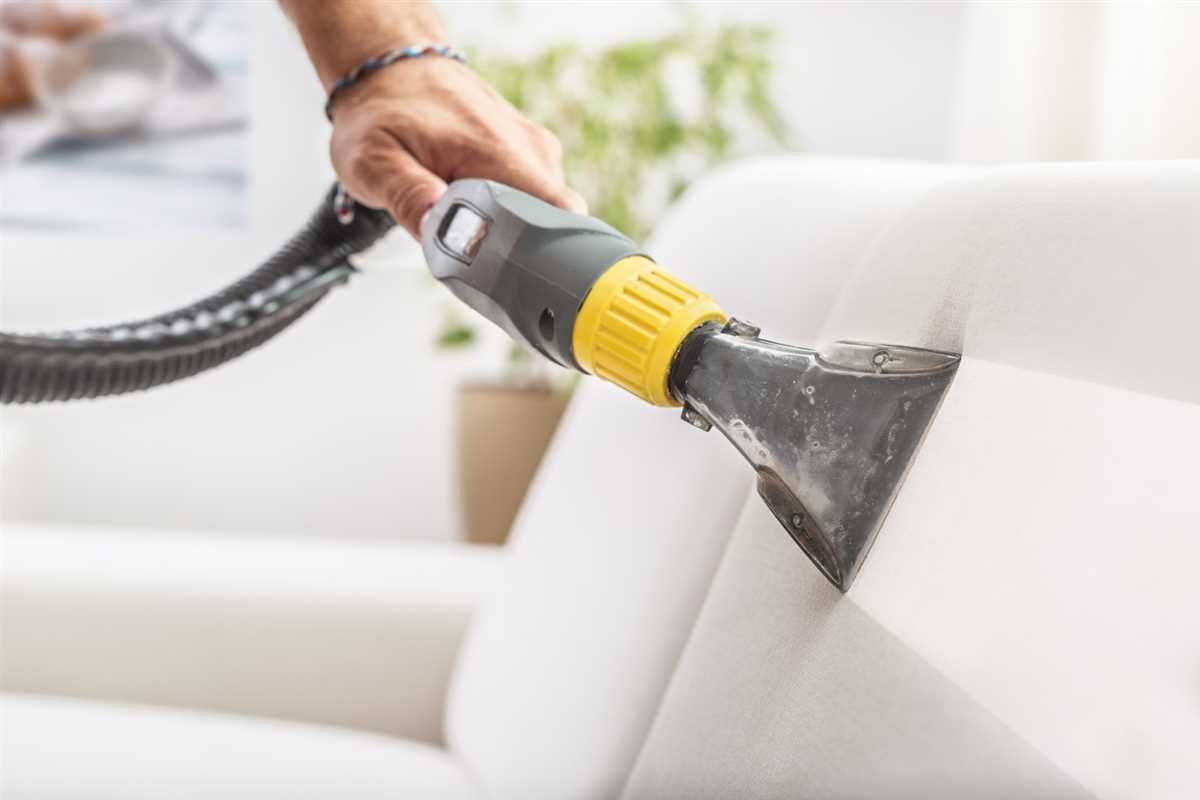




Ironing is a common household chore that many of us do on a regular basis. We often use it to make our clothes look neat and presentable. But have you ever wondered if ironing also helps kill germs?
There’s a common belief that the high temperatures involved in ironing can help eliminate bacteria and other harmful microorganisms on fabrics. In fact, some people even use steam irons as a way to sanitize items like bedding and towels. But is there any truth to these claims?
According to experts, ironing alone is not enough to completely kill germs. While the high heat from an iron can help neutralize some bacteria, it is not sufficient to eliminate all types of microorganisms. Additionally, ironing may only kill bacteria on the surface of the fabric, leaving behind any germs that may be hiding deeper within the fibers.
So, if you’re looking to effectively kill germs on your clothes and household items, it’s best to rely on proper cleaning and sanitization methods. Washing fabrics in hot water, using detergent and disinfectants, and drying items thoroughly at high temperatures are more effective ways to eliminate bacteria and promote hygiene.
Remember, while ironing may help make your clothes wrinkle-free, it is not a foolproof method for killing germs. So, make sure to prioritize proper cleaning practices to keep yourself and your family safe from harmful microorganisms.
Does Ironing Kill Germs?
Ironing is a common household chore that many people use to remove wrinkles and create a polished appearance for their clothes. However, there is a common misconception that ironing can also kill germs on clothing. Let’s find out the truth behind this belief.
How does ironing work?
Ironing involves the use of heat and pressure to smooth out wrinkles in fabric. When you iron a garment, the heat from the iron causes the fibers in the fabric to relax and straighten. The pressure applied by the iron also helps to flatten the fabric, resulting in a wrinkle-free appearance.
Does ironing kill germs?
While ironing can effectively eliminate wrinkles, it is important to note that it does not kill germs. Germs, such as bacteria and viruses, are microorganisms that require specific conditions to survive. Ironing alone does not reach the temperatures necessary to kill these microorganisms.
- Ironing can remove some surface dirt and debris from clothing, but it is not a reliable method for sanitizing or disinfecting garments.
- To effectively kill germs on clothing, it is recommended to use other methods, such as washing with detergent in hot water or using a disinfectant spray.
- It is also important to remember that germs can be present on various surfaces, not just clothing. Regular cleaning and disinfection of commonly touched surfaces is essential for maintaining a hygienic environment.
Conclusion

Ironing may have its benefits in terms of removing wrinkles and improving the overall appearance of clothing, but it is not a reliable method for killing germs. To ensure proper hygiene, it is best to follow recommended cleaning and disinfection practices, particularly when it comes to items that may come into contact with germs.
Understanding the Impact of Ironing on Germs

Introduction

Ironing is a common household practice used to remove wrinkles and creases from clothes. While its main purpose is to improve the appearance of fabrics, many people wonder if ironing also helps in killing germs present on clothes. In this article, we will explore the impact of ironing on germs and whether it can effectively eliminate them.
The Role of Heat
Ironing involves the application of heat to the fabric surface, which raises the temperature of the clothes. High temperatures have been proven to kill or inactivate certain types of germs, including bacteria and viruses.
However, it is important to understand that not all germs are equally susceptible to heat. Some bacteria and viruses are more resilient and can withstand higher temperatures. Additionally, the duration of exposure to heat also plays a role in determining its effectiveness in eliminating germs.
Effectiveness of Ironing in Killing Germs
While ironing can provide some level of germ-killing effect, it is not a foolproof method for complete disinfection. Ironing may be effective in reducing the number of germs, but it is unlikely to eliminate all of them.
Germs can reside on various parts of the clothes, including the inner layers and areas that are not in direct contact with the iron. Moreover, some germs are more resistant to heat and may survive the ironing process.
Complementary Germ-Killing Methods
To ensure thorough disinfection of clothes, it is recommended to use complementary germ-killing methods in addition to ironing:
- Washing: Regularly washing clothes with detergent and hot water is an effective way to remove germs.
- Bleaching: Adding bleach to the laundry can further enhance the germ-killing effect.
- Disinfectants: Using disinfectants or laundry additives specifically designed to kill germs can be beneficial.
Conclusion
Ironing can contribute to reducing the number of germs on clothes. However, it is not a standalone solution for complete disinfection. To ensure optimal hygiene, it is important to use complementary methods like washing with detergent, bleaching, and using disinfectants. By combining these practices, you can effectively minimize the presence of germs on your clothes and maintain a clean and healthy environment.
The Science Behind Ironing and Germ Elimination
Ironing is a common household chore that many people engage in regularly. Not only does it help remove wrinkles and creases from clothes, but it can also play a role in eliminating germs and bacteria. Understanding the science behind ironing and germ elimination can help you make informed decisions about this cleaning method.
How Does Ironing Eliminate Germs?

Ironing involves the use of heat and pressure to smooth out wrinkles and create a neat appearance. High heat has long been known to have germ-killing properties, and ironing utilizes this principle to eliminate bacteria and other microorganisms.
When you apply heat to fabric, the high temperature can destroy many types of germs, including bacteria, viruses, and fungi. The heat disrupts the structure and function of these microorganisms, rendering them inactive or killing them outright.
Additionally, the pressure applied during ironing can further enhance germ elimination. The force exerted by the iron can physically destroy or remove microorganisms from the fabric’s surface, helping to eliminate any remaining germs.
Limitations of Ironing for Germ Elimination

While ironing can be effective in killing some germs, it is important to note that it may not eliminate all types of microorganisms or provide complete sterilization. Some bacteria and viruses are more resistant to heat and pressure, requiring higher temperatures and longer exposure times to be effectively eliminated.
Furthermore, ironing only addresses the germs present on the fabric being ironed. It does not eliminate germs on other surfaces, such as countertops or doorknobs, which may come into contact with the ironed clothes. Therefore, it is important to maintain good overall hygiene practices and regularly clean surfaces in your home to minimize the risk of germs spreading.
Conclusion
Ironing can be a useful method for eliminating germs from clothes due to its combination of heat and pressure. While it may not provide complete sterilization or eliminate all types of microorganisms, it can help reduce the presence of bacteria, viruses, and fungi on fabric surfaces. Remember to practice good overall hygiene and cleanliness in your home to complement the benefits of ironing as a germ elimination method.
Factors That Affect Germ Killing Efficiency

While ironing can help eliminate some germs, it is important to consider various factors that can affect its efficiency in killing germs.
- Temperature: The effectiveness of ironing in killing germs depends on the temperature reached by the iron. Higher temperatures are generally more effective in killing germs.
- Duration: The amount of time the iron is in contact with the fabric can influence its germ-killing efficiency. Longer durations may lead to better elimination of germs.
- Fabric Type: Different fabrics have varying heat resistance and ability to retain heat. Some fabrics may not get hot enough to effectively kill germs, while others may be more capable of doing so.
- Germ Type: Not all germs are equally susceptible to heat. Some germs may be more resistant and require higher temperatures or longer durations of heat exposure to be effectively eliminated.
- Surface Cleanliness: Ironing should be done on clean surfaces to prevent the spread of germs. If the surface is contaminated, it may lead to ineffective germ killing or even the transfer of germs to other areas.
It is important to remember that ironing alone may not be sufficient for complete germ elimination. It should be used as a supplement to proper cleaning and hygiene practices, such as regular washing of clothes and surfaces, using disinfectants, and maintaining good personal hygiene.
| Factor | Effect on Germ Killing Efficiency |
|---|---|
| Temperature | Higher temperatures are generally more effective. |
| Duration | Longer durations may lead to better elimination of germs. |
| Fabric Type | Different fabrics have varying heat resistance and ability to retain heat. |
| Germ Type | Not all germs are equally susceptible to heat. |
| Surface Cleanliness | Ironing on clean surfaces prevents the spread of germs. |
Alternative Methods for Killing Germs
While ironing can effectively kill some types of germs, there are alternative methods that can also be used to disinfect and eliminate bacteria and viruses. Here are a few alternative methods you can try:
1. Washing with hot water

One effective way to kill germs on clothing and other washable items is to wash them in hot water. Hot water can help to kill a wide range of bacteria and viruses, including those that may be resistant to other disinfecting methods.
2. Using disinfectant sprays or wipes
Disinfectant sprays or wipes can be used to quickly and easily kill germs on surfaces. Look for disinfectants that are specifically formulated to kill bacteria and viruses. Make sure to follow the instructions on the product for proper use and disinfection.
3. Using UV light

UV light has been shown to have germicidal effects and can be used to disinfect various items. UV light devices such as UV wands or UV sanitizers can be used to target and kill germs on surfaces, electronic devices, and other objects.
4. Steam cleaning
Steam cleaning can effectively kill bacteria, viruses, and other germs. Steam cleaners use hot steam to disinfect surfaces and can be used on a variety of items such as carpets, upholstery, and kitchen surfaces.
5. Using antimicrobial products
Antimicrobial products can help reduce the growth and spread of germs. Look for products with antimicrobial properties, such as cutting boards or surface coatings, that have been treated with substances like silver or copper, which have natural antimicrobial properties.
6. Disinfecting with alcohol-based solutions
Alcohol-based solutions, such as isopropyl alcohol or rubbing alcohol, can be effective in killing many types of germs. They can be used to disinfect surfaces, electronic devices, and other items by wiping them with the alcohol solution.
7. Natural disinfectants
There are also natural disinfectants that can be used to kill germs. Examples include vinegar, lemon juice, hydrogen peroxide, and tea tree oil. These natural ingredients have antimicrobial properties and can be used as alternatives to conventional disinfectants.
It’s important to note that while these alternative methods can help kill germs, they may not be as effective as ironing or using chemical disinfectants in certain situations. It’s always best to follow proper cleaning and disinfection guidelines recommended by health authorities to ensure the most effective germ elimination.
FAQ
Does ironing kill germs on clothes?
Yes, ironing can help kill germs on clothes. When you iron your clothes at high temperatures, it creates heat that can destroy some types of bacteria and viruses.
What temperature should I set my iron to in order to kill germs?
You should set your iron to a temperature between 140°C and 150°C to effectively kill germs on your clothes.
Can ironing eliminate all types of germs?
No, ironing cannot eliminate all types of germs. Some bacteria and viruses are more resistant to heat and may survive the ironing process. It is important to take other hygienic measures, such as washing clothes with detergent, to ensure thorough cleanliness.
Is ironing a reliable method to prevent the spread of diseases?
Ironing can help reduce the spread of diseases to some extent by killing certain germs on clothes. However, it should not be relied upon as the sole method of preventing disease transmission. Regular handwashing, proper hygiene practices, and maintaining a clean environment are crucial for preventing the spread of diseases.
Are there any downsides to ironing clothes to kill germs?
While ironing can help kill germs, it may have some downsides. Exposing clothes to high heat for too long can damage certain fabrics, causing them to shrink or lose their shape. Additionally, ironing can be time-consuming and may not be practical for all types of clothing. It is important to read the garment labels and follow the recommended ironing instructions to avoid any potential damage.
Does ironing clothes really kill germs?
No, ironing clothes does not kill germs. Ironing can help remove some bacteria, but it is not sufficient to fully kill germs.













